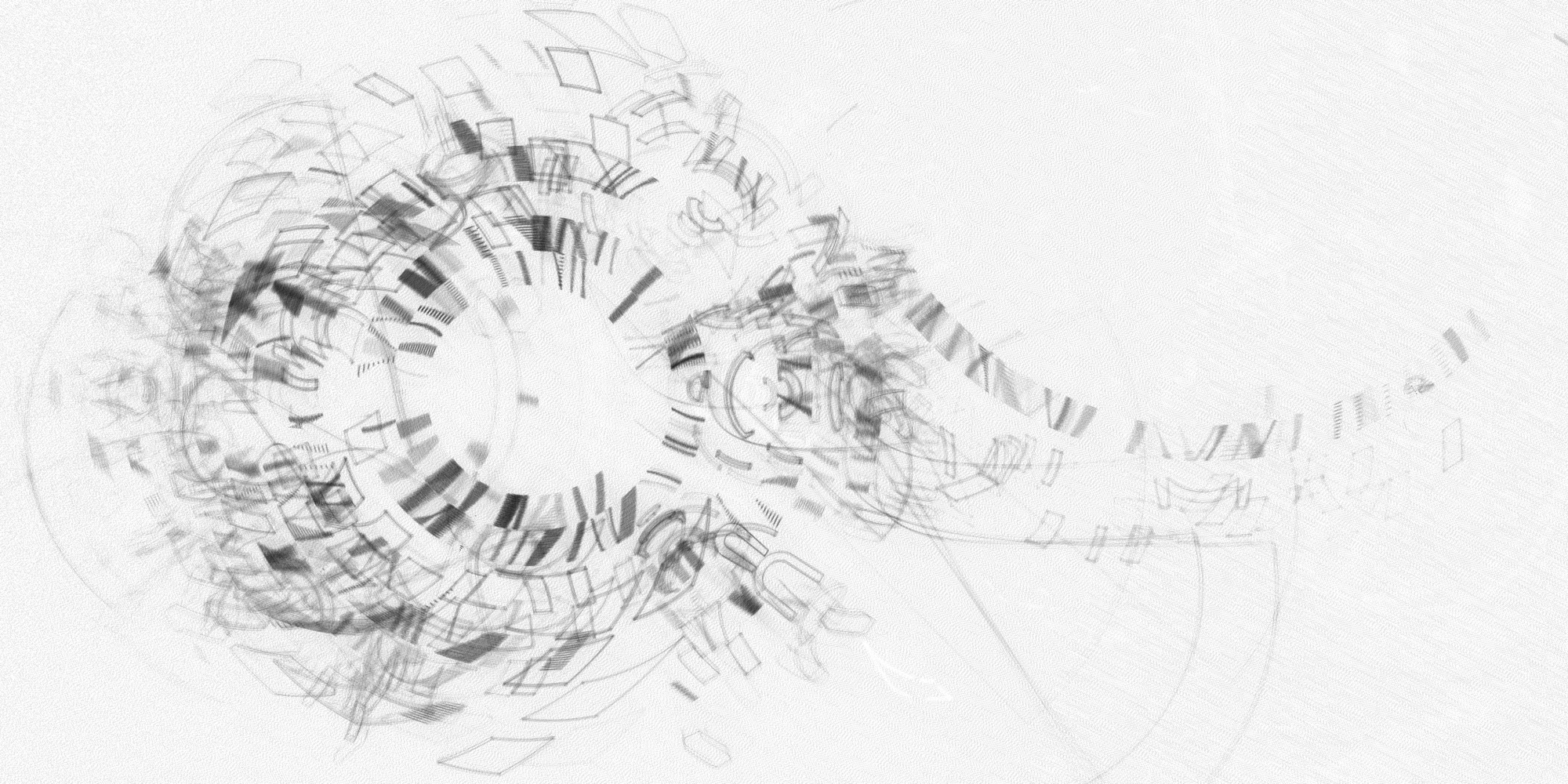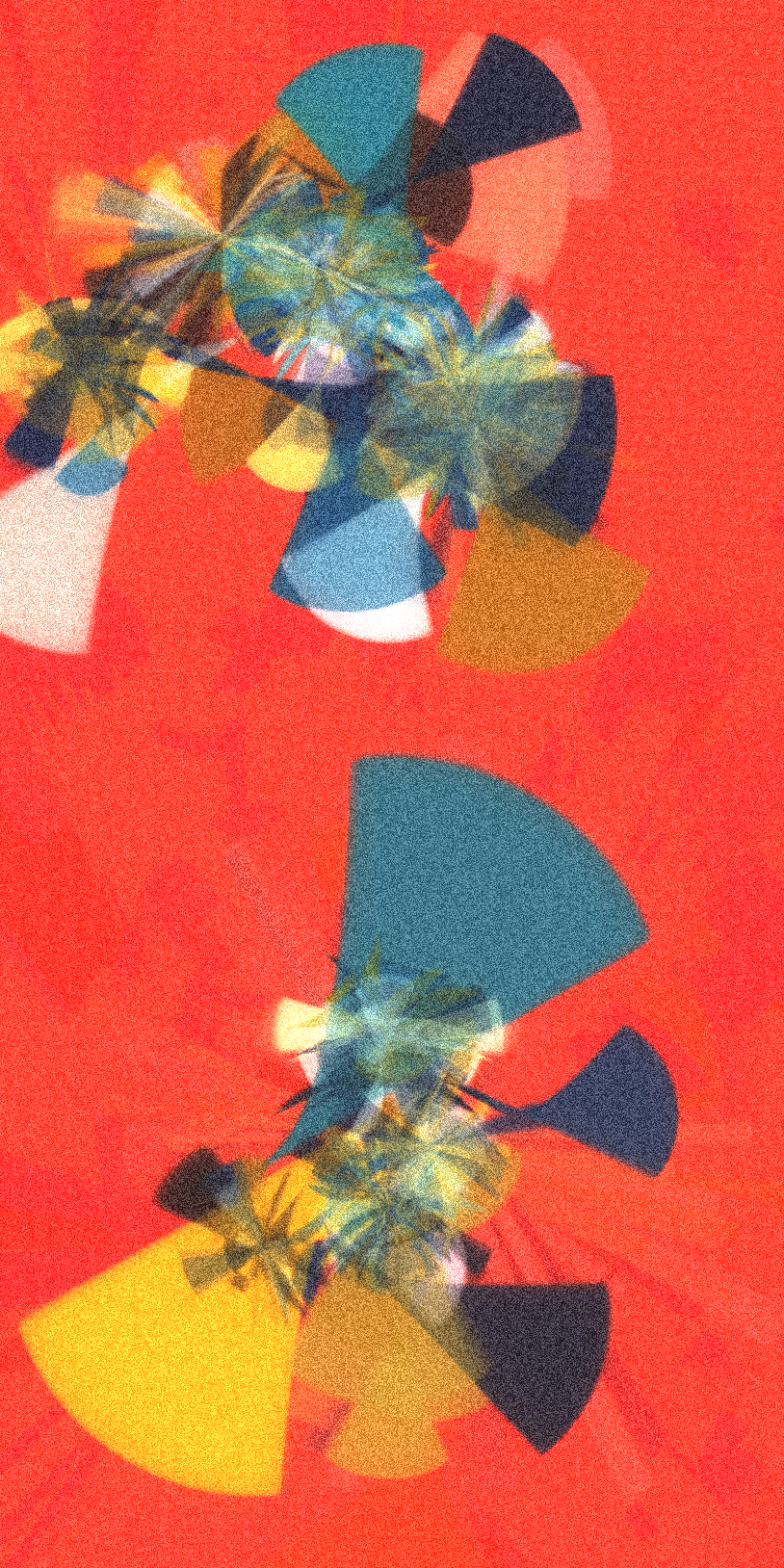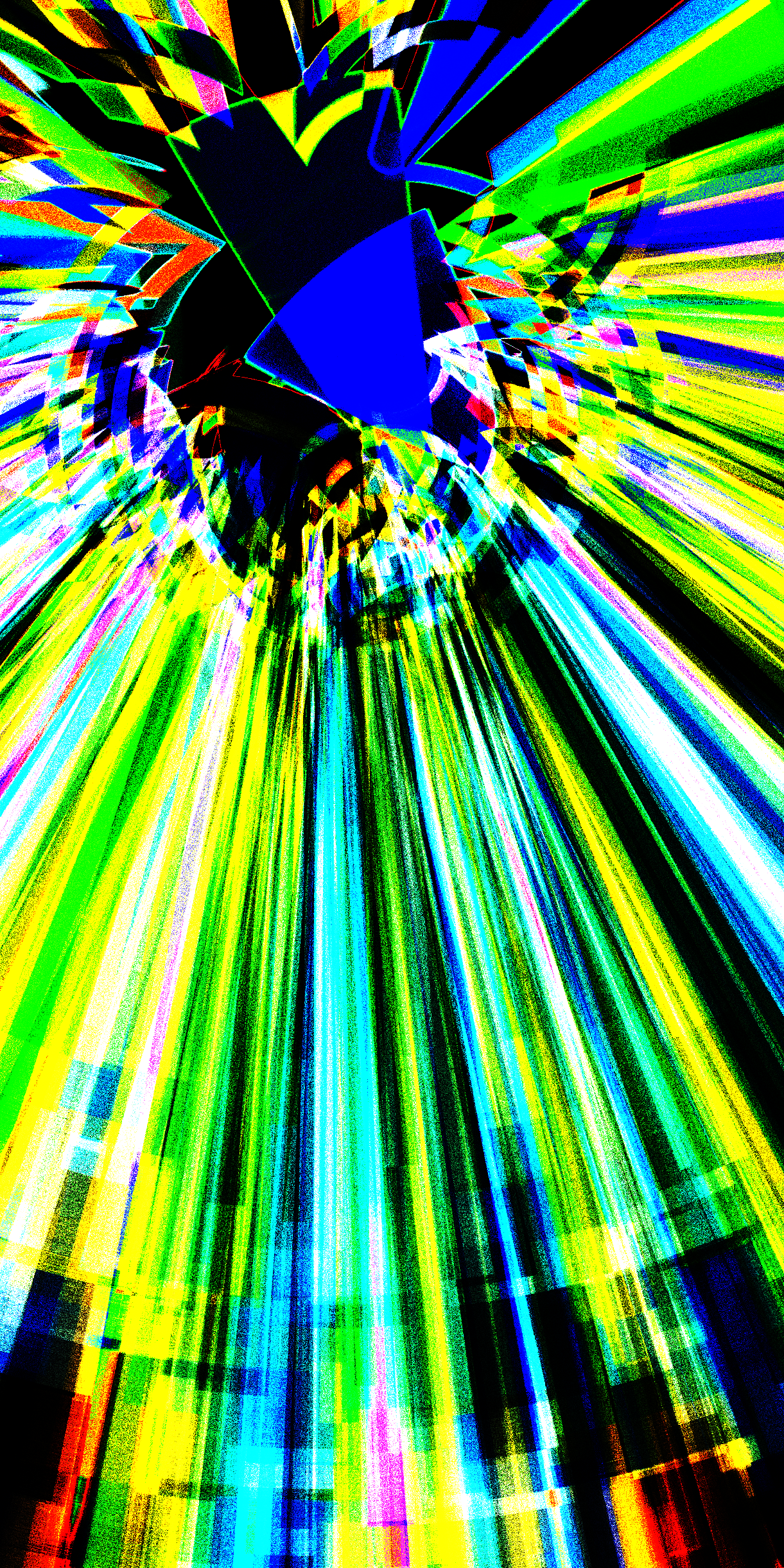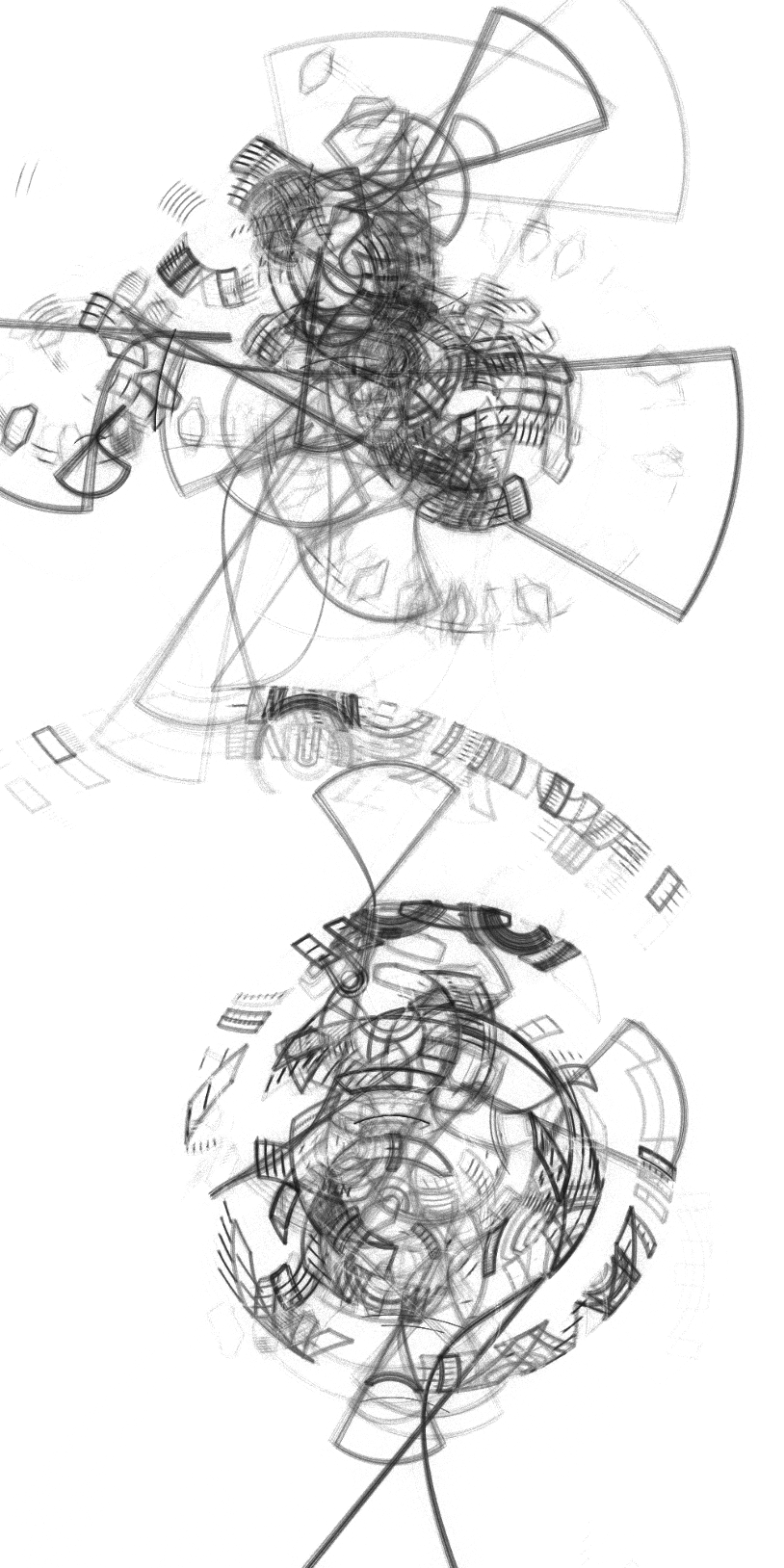No hay respuestas, sólo decisiones
No hay respuestas, sólo decisiones (there are no answers, only decisions). Nothing is permanent & final, there are only decisions to make as our context and ourselves evolve.

(view the permanently stored artwork live here, or a version stored on my site here)
Everything takes place in time, which shapes and binds all the activity we know and can imagine.
Time has its own dimensions. Time is a multi-resolution affair, at least from the point of the observer. Besides what general relativity remarks about time, there are other observer-related effects. Time is meaningful to us because we are aware of it. Because our cognitive experience, our own perception of things, takes place in time and makes a meaning out of time itself.
This perception of time is also relative. When we are young humans we have a much different relationship to time than when we grow old. When we are enjoying the moment vs. when we are afraid or suffering. When we are bored, when we are expecting something to happen.
The way we perceive time influences all those things that take place within time. Hence, how we perceive time is how perceive everything.
Also, time is the function of blossom and decay. Time is the function of change. We don't know change without time. Change is essential to our lives. The very biological-chemical reactions that make up our lives and allow our thoughts, our emotions, tears and love are change that takes place in time. Becoming young adults, becoming golden-age humans.
Time takes place in cycles for us humans. Orbiting around the Sun gives us a pattern with which we measure everything that happens in our lives. Perhaps future star travelers, born in different solar systems, will escape our perception. Or they won't, since our biology evolved in this cycle.
Since time happens in cycles for us, we experience things in cycles. Since time is the expression of change, cycles are always different. Yet we remain unaware, deliberately or not, of the subtle changes between cycles, and we don't perceive them unless we compare distant cycles to each other. The pictures of your childhood compared to your current self. Change happens in little amounts.
Time brings the ultimate changes that signify our ceasing to exist. We as humans as obsessed with finding a way to remain eternal. Possessions, works we leave behind. Nothing will escape time, though, only that their decay may follow a different time scale.

With the advent of artificial intelligence, one may be tempted to think that machines can achieve immutability. This, however, won't work either. AIs that lack a consciousness, whichever that may mean for them, won't be able to perceive their own immutability, hence rendering it useless from the standpoint of the human desire for such a thing. AIs that can perceive their own existence in time will necessarily experience change, as their context will change, which will necessarily change their relationship to their environment, hence triggering changes in whichever form of conscious existence they might achieve.
We as humans carry within us, in one way or another, all the expressions, consequences, hopes and worries that stem from change and the nature of time. This is a piece that reflects on the passage of time, on its cyclic nature for our species, on the little changes that take place from a cycle to another. The piece runs cycles of blossom and decay, cycles that fit within larger cycles that create other changes that gradually seep in.

The piece has a digital existence and a physical one.
The digital existence reminds us of the impossibility of immutability. When it is viewed in a browser, it will apply the effect of the passage of time since a given moment in time. The experimenter will have the possibility of viewing the piece as it started from that same moment, or let it run from the date that the browser tells the piece it is. The piece will evolve over time, with cycles that go sometimes faster, sometimes slower. It will never go back to the same point, as its gradual changes yield different combinations that never repeat in exactly the same way. This encourages letting go and embracing the fact that nothing remains intact.

The piece may display a beautiful composition at a given moment, only to keep progressing and show something different in the next minute. Also, as the piece progresses and traverses all the possibilities of its parameter space, it may yield pieces that feel somewhat incomplete. The observer awaits that perfect moment when all the elements will be arranged in a way that clicks and resonates with their inner self, sometimes only to find out that the piece evolves in a different way, when the perfect moment gets apparently spoiled by new geometry overlapping the one that was maturing on screen. We get carried out in our lives by those perfect moments, or rather by the possibility of their existence. However, life is about dealing with the imperfections, or rather with life itself, as perfections never exist in a true state.
Still, the piece does allow the observer to save stills for their future contemplation (press s), as well as pausing/resuming the evolution (press l).
The digital piece exhibits long cycles. Change is small between cycles. This makes the piece difficult to grasp in one first view. As with many things in life, one has to revisit the piece in many occassions to view what it can do. To get to know it better. If we look at it for a minute, we'll see something evolving in the short time scale. In the long time scale, we need to look at the piece several times to understand how it will evolve.
The physical existence of the piece is a different notion visually. It is an explanation of the cycles themselves. The piece evolves in its digital life on a screen, as it is never the same and can never be made reasonably representative in one or several snapshots. There are other things that represent or encode the piece that do not change, however. The chosen representation for the piece, as something that does not change and therefore has a reason to exist as a physical (non-changing) piece, is a visual guide to the rhythms that govern the piece. There are several parameters that control the shape that the piece takes at any given moment in time. Line stroke weights, density of lines, growth of the geometries, the type of growth, the palettes used, the inversion of colours. All these are governed by simple equations that create many cycles within the piece, yet remain unchanged and can explain what happens in the piece for the most part. There is some randomness applied as well, beyond these simple equations. Life is never fully predictable, and time brings effects that we did not expect. The physical piece plays with the concept of these equations being the root of the explanation for the variations in the digital existence.

Finally, the viewer may increase the resolution arbitrarily by pressing "d" followed by any number 1-9.
No hay respuestas, sólo decisiones. There are no answers, only decisions. There is nothing definite, no aswers, but rather decisions to make as the context evolves.
This artwork is part of the PHYGITAL exhibition presented by Kate Vass Galerie.